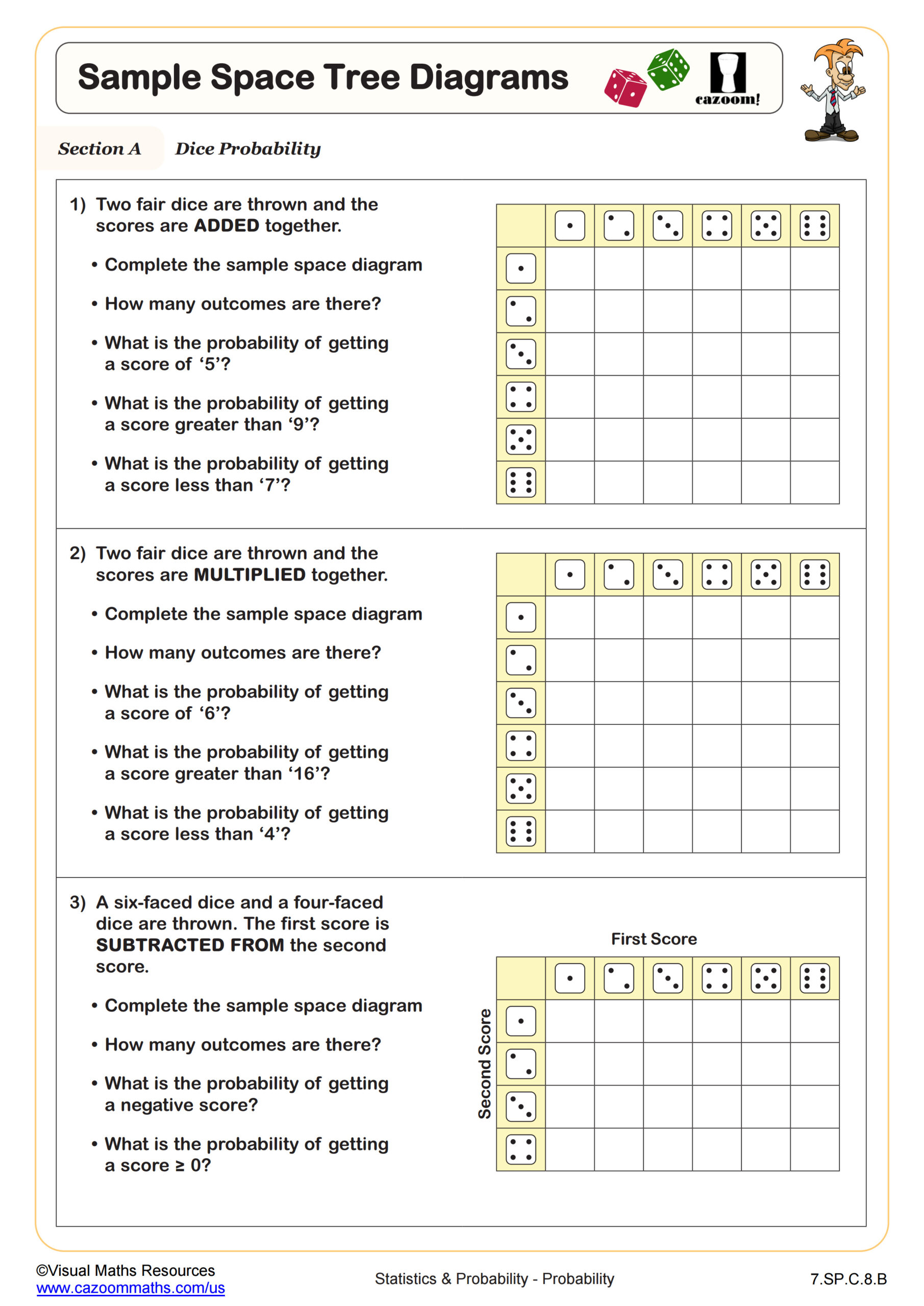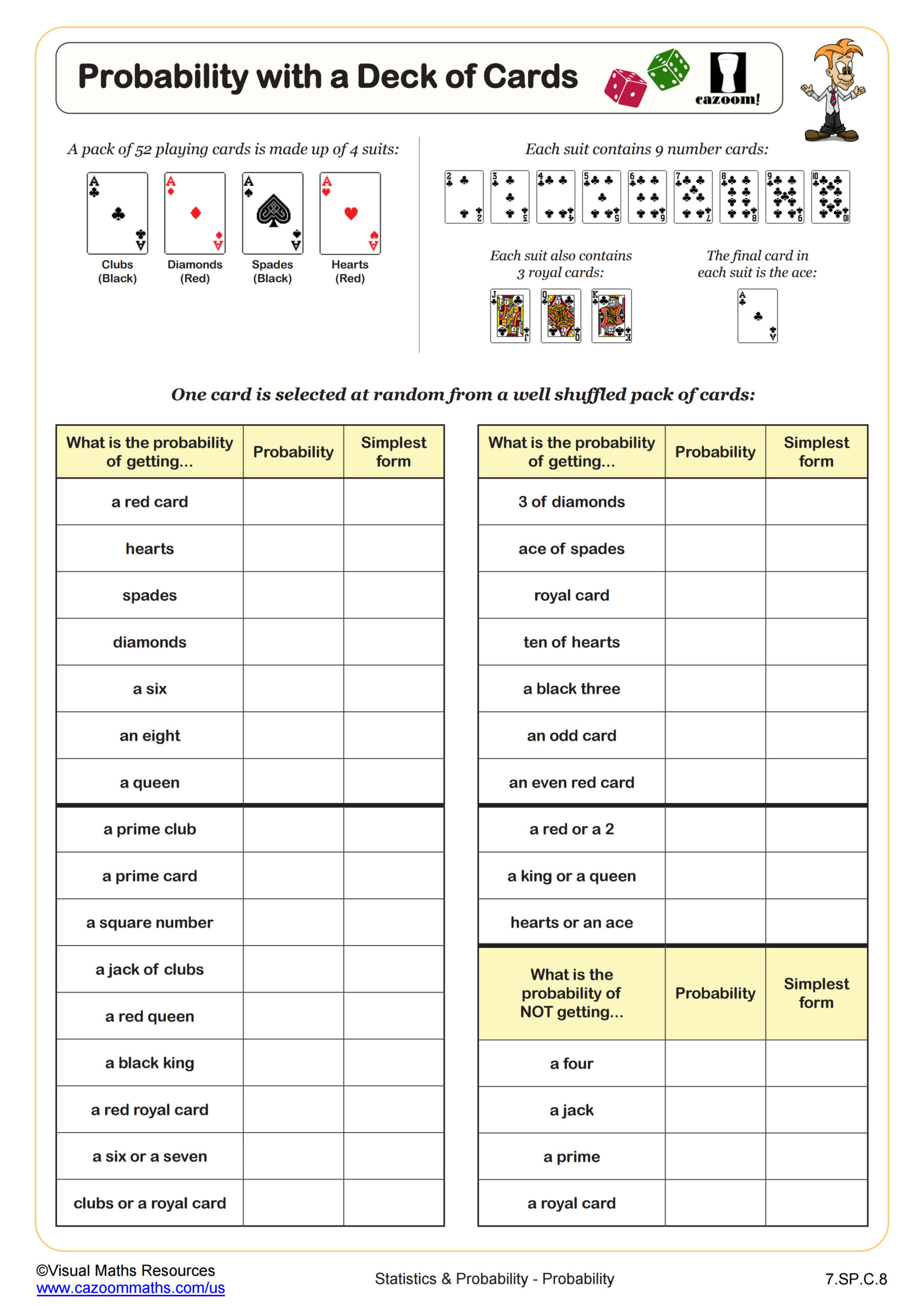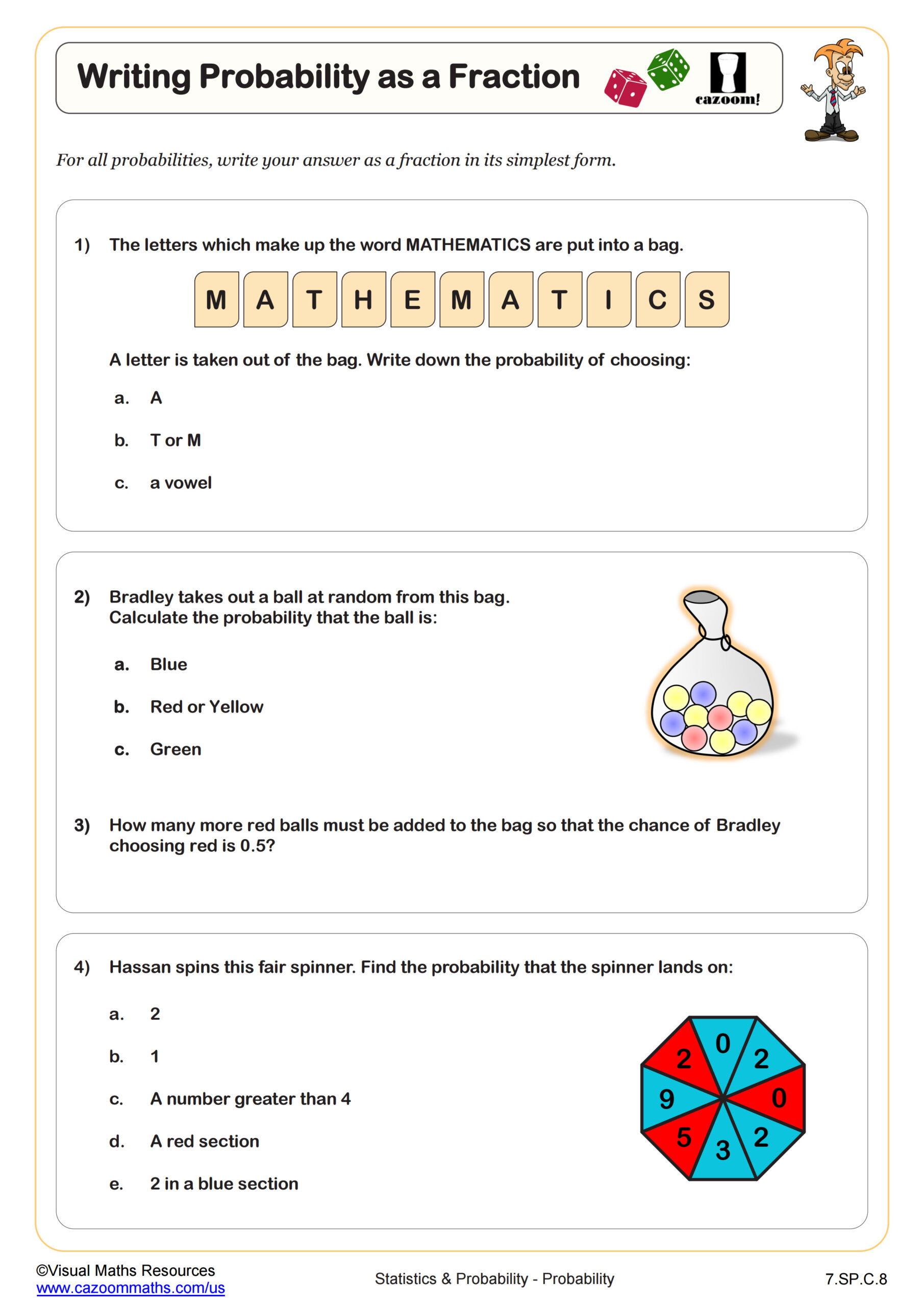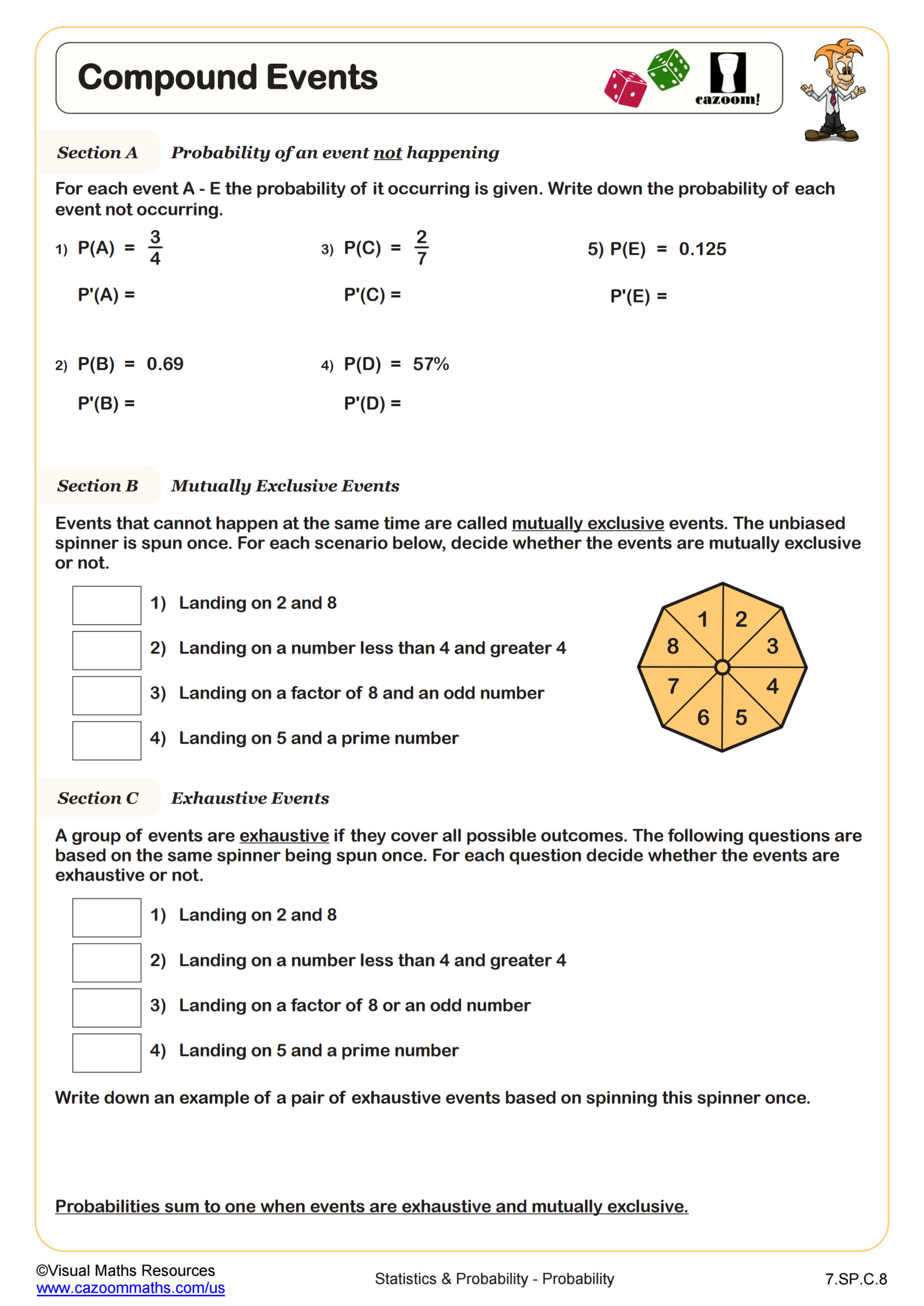Probability with Dice WORKSHEET
Probability with Dice WORKSHEET DESCRIPTION
This worksheet gives learners the opportunity to practice writing probability as fractions confidently with the familiar theme of rolling a dice. Students will write the probability of single outcomes occurring as well as combined outcomes such as rolling a one or a two. Learners will need to be familiar with multiples, factors, primes, square numbers, and triangle numbers, as many questions include this language. Also included is a section where students will mark the probability of six outcomes occurring on a scale from 0 to 1. Encourage your students to simplify all their answers.
For more practice, see our worksheet Probability with a Deck of Cards
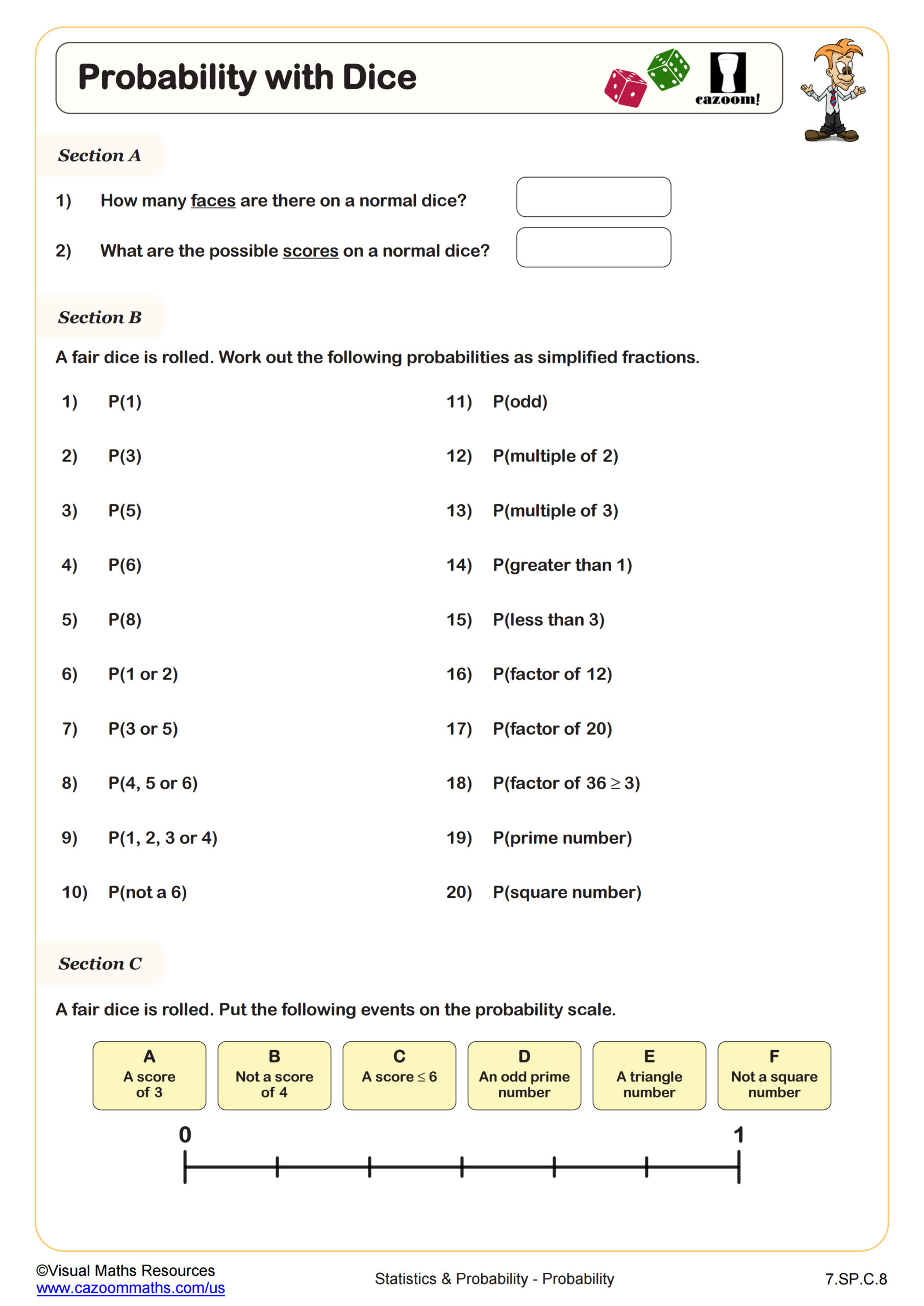
RELATED TO Probability with Dice WORKSHEET
Frequently Asked Questions
This probability with dice worksheet is designed for students in 7th Grade and aligns with Common Core State Standards.
